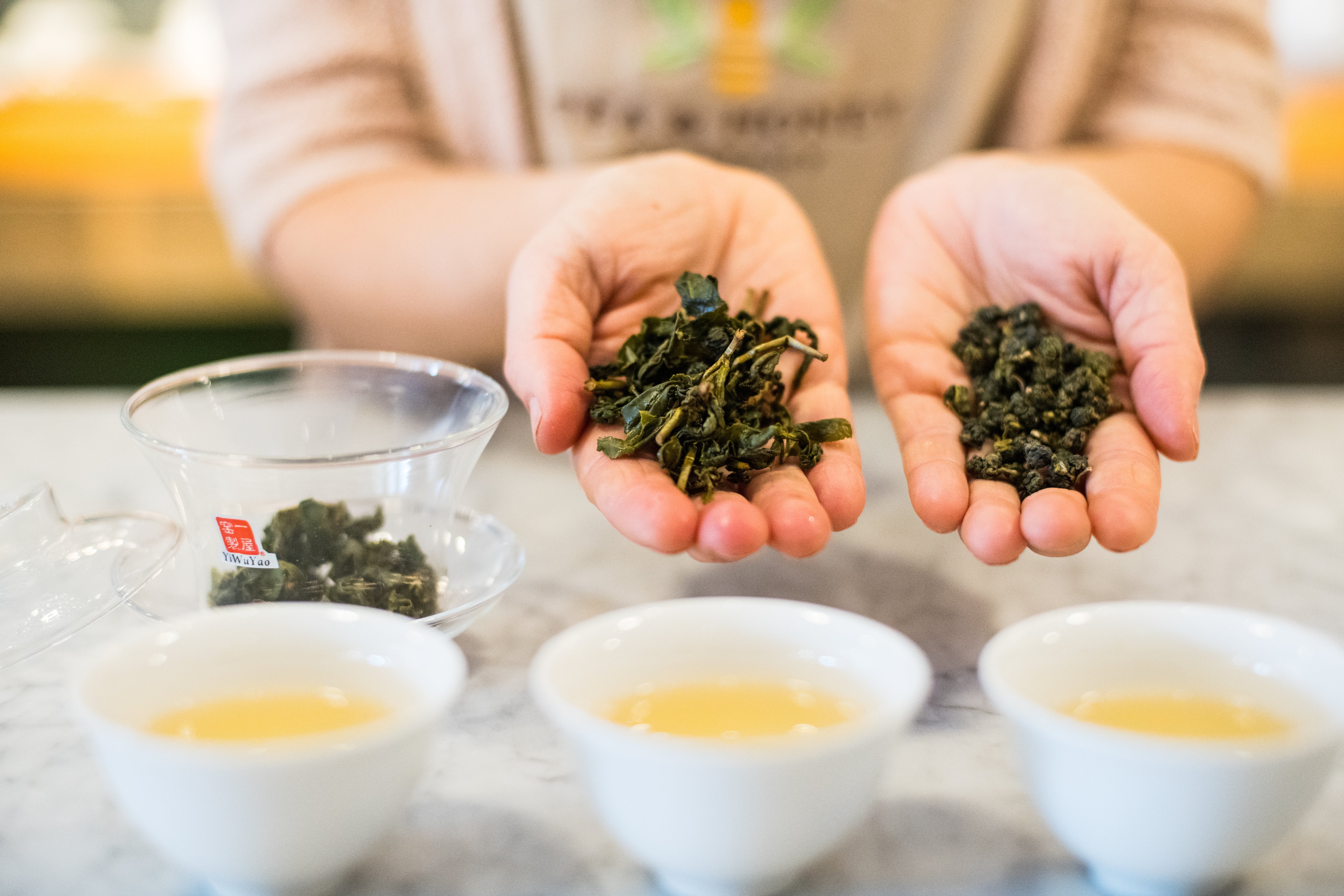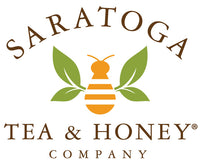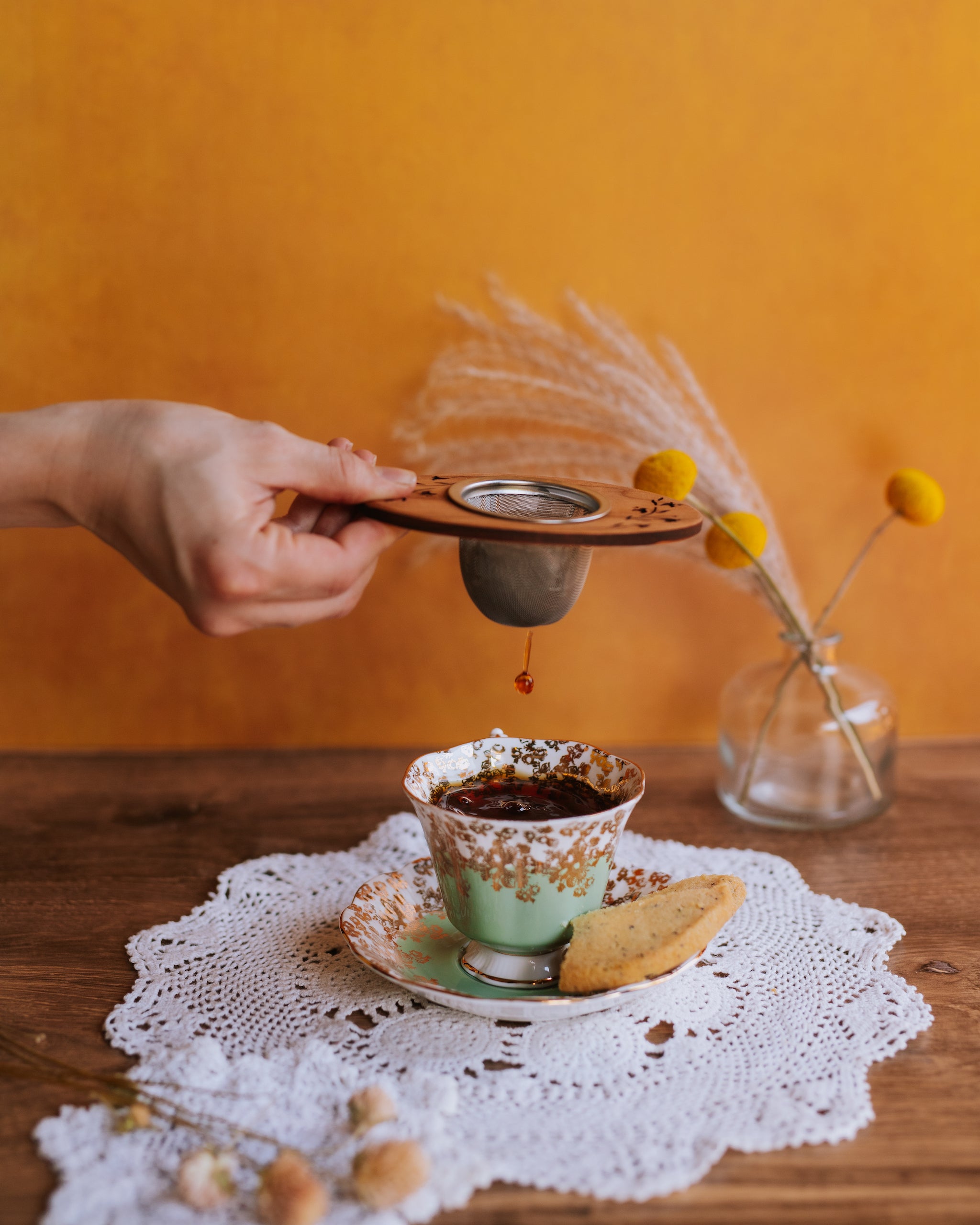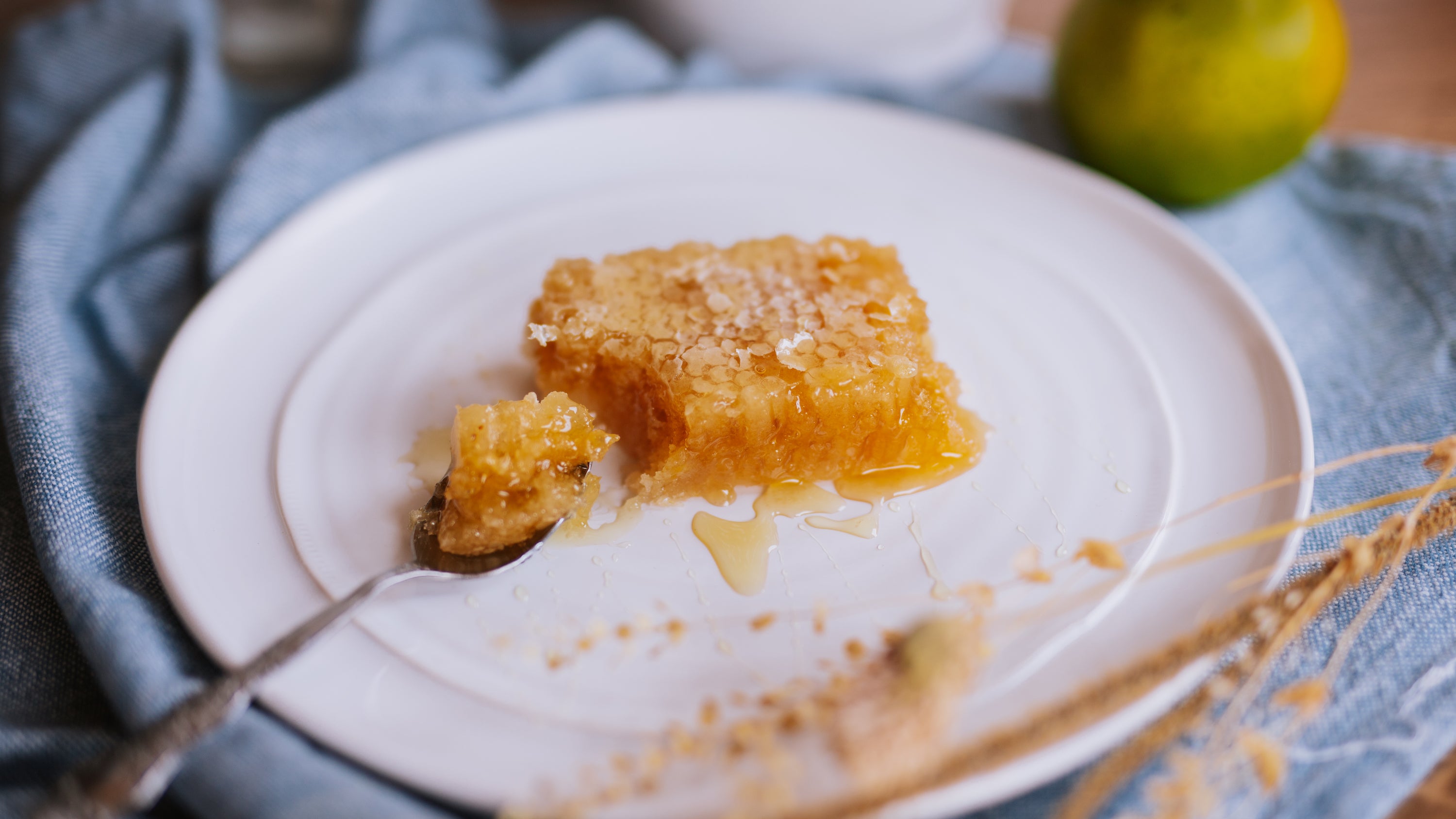
Taiwan is a small archipelago with the perfect climate for cultivating tea. Though their tea growing history is comparatively short, Taiwan's tea growing regions are some of the most famous and highly regarded in the world.
We've previously discussed oolongs and their history in general, but the Taiwanese oolongs are so special and unique they deserve an entire post of their own!
In this photo, you can clearly see how the dry beads on the right unfurl to reveal large, full leaves when steeped (center).
History of Tea Production in Taiwan
Just off the coast of China, across the South China Sea, Taiwan has a complicated history with tea. Though native, wild tea trees have been found in southern Taiwan near Kaoshan, the history of tea and tea production in Taiwan is inevitably linked to the long history of world powers vying for control of the tea trade and this strategically located island, ideal for exporting goods to Europe.
It was the Dutch, who controlled the island in the 17th century, who first began the tea trade on Taiwan. But it was after Taiwan was annexed to China in 1683 by the Qing dynasty that a wave of immigration brought with it tea plants, seeds, and production expertise. Many of these immigrants were from the Anxi and Wuyi Mountain areas of the Fujian Province (where oolong teas are believed to have originated).
At first families cultivated tea for their own consumption, but over time the tea trade started to develop, becoming more substantial around the end of the 18th century. This slow increase in tea production caught the eye of European traders, and in 1866 John Dodd became involved in in the trade, offering to finance tea plantations and set up factories for tea processing (eliminating the need to send the leaves to Fujian for the final stages of processing).
The Japanese then occupied the island from 1895 to 1945 and greatly encouraged black tea production to take advantage of the demand for this type of tea in the US and Europe - as well as avoid competing with Japan's own green tea production. Further development of the tea industry was highly encouraged under Japanese occupation, with the government offering training courses and gifting plants and fertilizers to Taiwanese peasants.
After the second world war, focus for the tea industry in Taiwan shifted yet again with the arrival of the Chinese. Now production was mostly oriented to green teas being exported to North Africa, and in 1965, Japan. But during the 1970s, strong competition from China and Japan forced Taiwan to reassess its role in the tea market once again, shifting focus to production of the local favorite: oolong. Fortuitously, household income for most Taiwanese had increased during this time, and tea growers serving a domestic market were able to focus on quality instead of quantity. These changes and skillful introduction by the government of educational programs like tea festivals, museums, etc. directly led to the production of the beautiful Taiwanese oolongs we so enjoy today. Quality has become such an important marker for Taiwanese tea producers that there are many contests in tea producing regions. Winning the prize, of course, increases the value of the tea!
By the numbers: To give you an idea of just how important domestic tea production is to Taiwan, growers produce around 16,500 tons of tea every year and Taiwan exports less than 1/4 of that yield (around 4,100 tons). The rest is consumed domestically. All 12,000 tons of it!
What Makes Taiwanese Oolongs So Special?
Taiwan - Tea Regions, Topography & Terroir

Taiwan is an archipelago with one main island just across the South China Sea from China. Taiwan has a very special combination of topography and climate that makes their western regions an ideal environment for producing tea.
You can see in this topographical map courtesy of Google Maps that a large, long, and tall mountain range runs down the middle and eastern sides of Taiwan. The Zhong Yang San Mai mountain range protects the western third of the island from storms coming in off the ocean from the west. This, combined with temperate conditions that rarely drop below 55° F and an average rainfall of 79" a year, makes the western slopes of the mountain range a wonderfully hospitable climate for growing tea.
Taiwan's Main Tea Regions
Taiwan has several different tea growing regions, many with one or more mountains famous for their particular terroir and tea production.
District of Nantou
Located in the center of Taiwan, Nantou is the principle growing region on the island and includes both Mount Dong Ding and Mount Shan Lin Xi.
Producing around 12,000 tons per year, Nantou produces over half the tea grown in Taiwan. However, outside the famous mountains of Dong Ding and Shan Lin Xi, both of which are home to exceptional tea gardens, much of the tea produced in Nantou is of medium quality. This may in part be attributed to the high volume of tea produced, as well as advanced mechanization and processing of tea harvests shipped to Nantou from other areas of Taiwan.
Mount Dong Ding & Mount Shan Lin Xi
Celebrated for their high altitude teas, Mount Dong Ding hosts tea gardens that produce oolongs at 1,650 - 2,600 feet and Mount Shan Lin Xi is home to gardens that reach as high as 5,400 feet. Dong Ding is known for its honeyed notes of lilac and vanilla. Shan Lin Xi teas are sweetly vegetal with aromas of cherry and white flowers.
District of Taipei
In the north, Taipei is the original home of tea in Taiwan, and it is still the second-most important growing region. As Taipei became less important as a key location for exporting teas, and the area grew more industrialized, many tea plantations moved south to Nantou. Still, Pinglin and the Mucha Mountains are home to many beautiful gardens.
Pinglin & The Mucha Mountains
A village to the west of Taipei, Pinglin is home to a type of twisted leaf oolong known as Bao Zhong. Most Taiwanese oolongs today are rolled into little beads, making Pinglin Bao Zhong rather rare among Taiwanese oolongs. The Mucha Mountains are home to the Tie Guan Yin cultivar, brought to the mountains south of Taipei by the Tsang brothers from Anxi, China in 1875. Mucha Tie Guan Yin is known for its intense, roasted flavor.
District of Chia Yi
If tea production in Taiwan as a whole is relatively new, tea production in the Chia Yi district is in its infancy. Yet this small but mighty region produces some of Taiwan's best known Gao Shan Cha, or high-altitude teas.
Ali Shan Mountain & Yu Shan Mountain
Ali Shan is home to several gardens at altitudes between 2,300 and 5,600 feet. A protected park with soaring evergreens at high altitudes and lush vegetation that gives way to palm trees, banana trees, and other fruit trees at the base, the beauty of this mountain shows through in the teas produced there. Ali Shan merges with Mount Yu Shan. Though Yu Shan peaks at 12,966 feet, its tea plantations are at around 4,250 feet. Teas from this region tend to have heady and rich floral aromas with supple, smooth liquors that give off notes of the exotic fruits and flora found on these mountains.
District of Hsinchu
Home of the famed Oriental Beauty, Hsinchu is in northwestern Taiwan, an area of plains that lie at about 650 feet above sea level. This region produces mainly dark oolongs that are oxidized between 40 and 60 percent. Included among these is Oriental Beauty, the bug bitten oolong that is the most popular tea in Taiwan.
Districts of Hualien and Taitung
Both located on the eastern coast of Taiwan, these regions are lesser known. In recent years Hualien has been moving towards organic productions, but its gardens are more subject to the capricious nature of storms coming in off the ocean. These regions generally produce different kinds of tea, not just oolong.
District of Taichung
Like Chia Yi, this district is young but mighty. Only around 20 years old, tea production in this central district focuses on the high mountain oolongs produced on Li Shan and Da Yu Lin Mountains.
Li Shan and Da Yu Lin Mountains
Li Shan (Pear Mountain) is home to growing areas between 5,250 and 8,700 feet. This area has traditionally been home to fruit orchards, but high demand is shifting focus so rapidly the government has had to step in to avoid excessive expansion into tea and away from fruit. Nearby, the gardens on Da Yu Lin Mountain are at an altitude of 8,500 feet and among the highest anywhere in the world.
The Terroir of High Altitude Taiwanese Teas - Gao Shan Cha
The distinction of Gao Shan Cha, or high-altitude tea grown above 3,300 feet, is relatively unique to Taiwan (only Sri Lanka joins Taiwan in distinguishing between high-altitude and low-altitude teas). With some of the highest elevation tea gardens in the world, it makes sense that Taiwan would distinguish between low- and high-altitude tea, but what makes altitude worth distinguishing?
High-Altitude Climates & Their Effects on Tea
Anyone who's gone hiking in and around our beautiful local peaks in the Adirondacks will tell you that a warm sunny day at the base of the mountain can be a bit chilly and cloudy by the time you reach the peak.
To put the mountains in Taiwan in perspective for those familiar with the Adirondack State Park, Mt Marcy - the highest point in New York - has an elevation of 5,344 feet (1,629 meters). Mount Ali Shan in Taiwan is 8,737 feet (2,663 meters), with some of its tea gardens reaching to 5,600 feet above sea level - higher than the highest point of Mt Marcy! And Mount Ali Shan is not even the highest tea producing peak in Taiwan!
The climate in Taiwan is temperate, but even on sunny days the high-altitude tea gardens often experience fog and low-lying clouds that linger in the mornings and evenings. This low-lying, misty cloud cover acts much like the man-made shading techniques in Japan, naturally forcing the tea plants to work harder for sunlight, concentrating their leaves with sweet chlorophyll. The high-altitude shoots are extremely dark green and concentrated in amino acids and nitrogen compounds. The fog also has the additional effect of moistening the leaves, keeping them tender and supple - perfect for later processing into the characteristic rolled beads.
Additionally, the temperatures are just enough cooler at altitude to slow the growth of the tea trees. Slower growth means the plants' aromatic oils are more concentrated in the leaves of high-altitude teas than their lower-altitude counterparts.
All this combines with the specific terroir of each mountain to produce teas that are more complexly aromatic and flavorful than their lower-altitude brethren.
Taiwanese Oolong Tea Production
The Taiwanese differentiate between lightly oxidized oolongs (10 ~ 30%) and more oxidized oolongs (40 ~ 70%), referring to oolongs with less oxidation as green oolong and oolongs with more oxidation as black oolong. Both teas follow a similar production process, with the black oolongs spending longer in the oxidation phase.
Processing Green Oolong Teas
Day 1
Day one of oolong production concentrates on the very important, delicate, and instinctive task of oxidation.
- Plucking - Plucking on the mountainous slopes of Taiwan's most famous tea gardens is done manually, mainly by women. For the tea plants to be ready for processing into oolong tea, the bud and the three following leaves must be open before plucking.
- Withering - Picked leaves are spread out on large sheets for 30 minutes to 2 hours, depending on the weather. This withering stage drys the leaves slightly so their moisture does not damage the leaves in processing.
- Oxidation - Oxidation determines the final flavor of the tea and is still largely instinctual, requiring experienced tea growers. Oxidation releases the aromas and begins stabilizing the leaves. Growers will spread out leaves on bamboo trays in a controlled temperature environment of about 68 - 77° F, with humidity of 60 - 85%. The leaves are then stirred at 1 - 4 hour intervals to create friction, breaking down the cellular structure of the leaves. This releases the aromatic oils and thus starts the enzymatic process of oxidation. Oxidation may take 10 to 18 hours and is not a science but an instinct. Experienced tea growers will touch and sniff the leaves to know the precise right time to stop oxidation.
- Firing - Enzymatic oxidation is halted by heating the leaves once the leaves have reached their required level of oxidation. This is done by placing the leaves in a heated rotating cylinder. The leaves are heated to 572° F for about 5 - 7 minutes.
- Rolling - Right after firing, the warm leaves are rolled by a mechanical arm for about three to five minutes.
- Drying - This first drying stabilizes the aromas and removes residual moisture. They start drying low, at about 158° for 5 - 6 minutes, then increase the temperature to 212° for another 20 minutes to a half hour. After this heating, the leaves are spread out on bamboo trays and left to stand overnight (6 - 8 hours).
Day 2
1. Shaping - On Day 2, the Taiwanese follow an important and repetitive cycle that will be repeated dozens of times. The steps are first repeated 10 - 20 times in a heated cylinder and then 30 - 40 times in a non-heated cylinder. It is this long, labor-intensive cycle that creates the distinctive, characteristic bead shape.
- Heating / Stirring - First the leaves are softened in a heated, rotating cylinder for a few minutes.
- Rolling - Next the leaves are divided into 44 pound packages, wrapped in a special fabric, then placed in a special machine that compresses it into a round shape using four rotating rollers.
- Compression - Another machine then turns and rolls these fabric-wrapped packages for about 10 minutes while applying compression pressure.
2. Final Drying - Final drying further stabilizes aromas and ensures there is no more than 2 - 3% moisture remaining in the leaves. Final Drying lasts around 5 - 10 minutes at around 212° F.
3. Sorting - Although this could be mechanized, usually the remaining small stems are removed by hand. Sorting is a purely aesthetic - and extremely tedious - part of the process, making the teas look more beautiful, but not affecting the taste.
4. Roasting (Optional) - Most producers in Taiwan do not roast their oolongs, though some consumers do ask for this step, which imparts a characteristic toasty and somewhat nutty flavor to the teas. Typically, this step would be done not by the grower but by the tea merchants. In roasting, the leaves are heated one final time in either an electric oven or in bamboo baskets over an electric heater, then stirred at 20 - 30 minute intervals for 2 - 60 hours. Roasting balances the flavors of the liquor and produces a sweeter and less astringent cup, while also reducing the caffeine levels in the tea.
Processing Black Oolong Teas
We will not go into as much detail about the process for Black Oolong Teas, as it is essentially the same we described in our What is Oolong Tea? blog. Black oolong teas are generally twisted instead of rolled, eliminating the need for the second day of processing that includes the rolling and compression cycle. The steps for making a black oolong are as follows:
- Plucking
- Withering
- Oxidation
- Panning
- Rolling
- Drying & Firing
Learn more about processing black oolongs >>
Sources:
Gascoyne, K., Marchand François, Desharnais, J., & Américi Hugo. (2016). Tea: History, terroirs, varieties. Firefly Books. Ltd.



